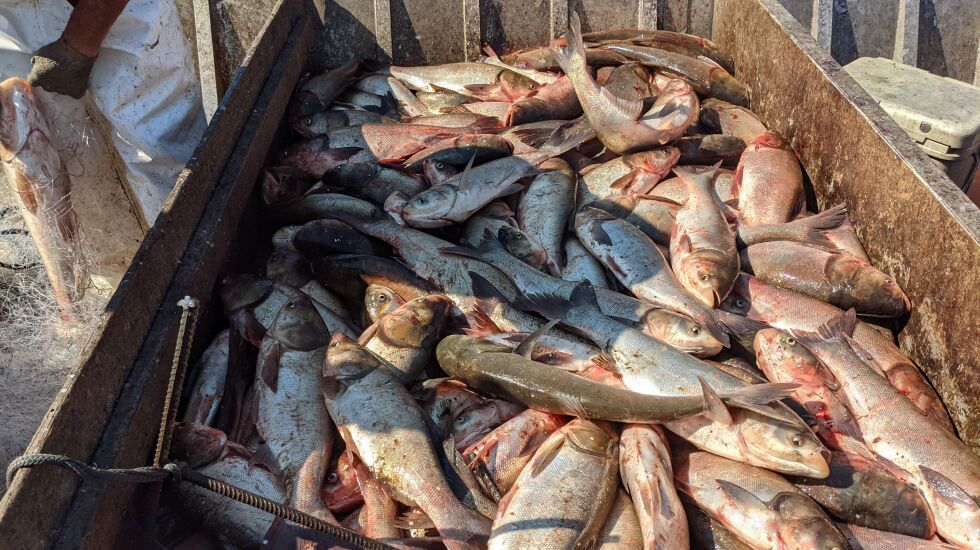
An invasive silver carp was removed earlier this week after it was found swimming in Lake Calumet on the Far South Side, the Illinois Department of Natural Resources announced on Friday.
The carp, weighing about 22 pounds and measuring 38 inches in length, was caught a day earlier by fishing crews working with the Invasive Carp Regional Coordinating Committee and the U.S. Army Corps of Engineers after it was spotted by someone in the lake — located just 7 miles from Lake Michigan, the department said.
The fish’s capture is not an indication that invasive carp are reproducing beyond electric barriers to prevent them from entering the Great Lakes, the department noted.
Silver carp, and other invasive carp species, pose a threat to the Great Lakes ecosystem and can grow to more than 100 pounds and 4 feet in length, according to the Great Lakes Fishery Commission.
Due to their size and rapid reproductive rates, invasive carp threaten to disrupt the food chain that supports native Great Lakes fish, including walleye, yellow perch and lake whitefish, according to a report from the Michigan Invasive Species program.
Invasive carp have become numerous in state waterways, including the Illinois River, but have been restricted from the Lake Michigan through the use of electric barrier fences, according to the Invasive Carp Regional Coordinating Committee.
More than 85% of the fish population is made up of invasive carp in the Chicago Area Waterway System, the committee said.
This week’s capture was the third time a carp has been caught beyond the barriers in over a decade. A silver carp was caught in 2017 below the T.J. O’Brien Lock and Dam 9 miles from Lake Michigan and a bighead carp was captured in Lake Calumet in 2010.
In June, state officials announced the invasive carp were being rebranded as “copi” in an effort to make them more appetizing to consumers.
By increasing demand for the fish as food, officials hope it will lead to more commercial fishing operations to pull them from the Illinois River, thus decreasing the overall number of invasive carp and the risk of them eventually making their way into the Great Lakes.








